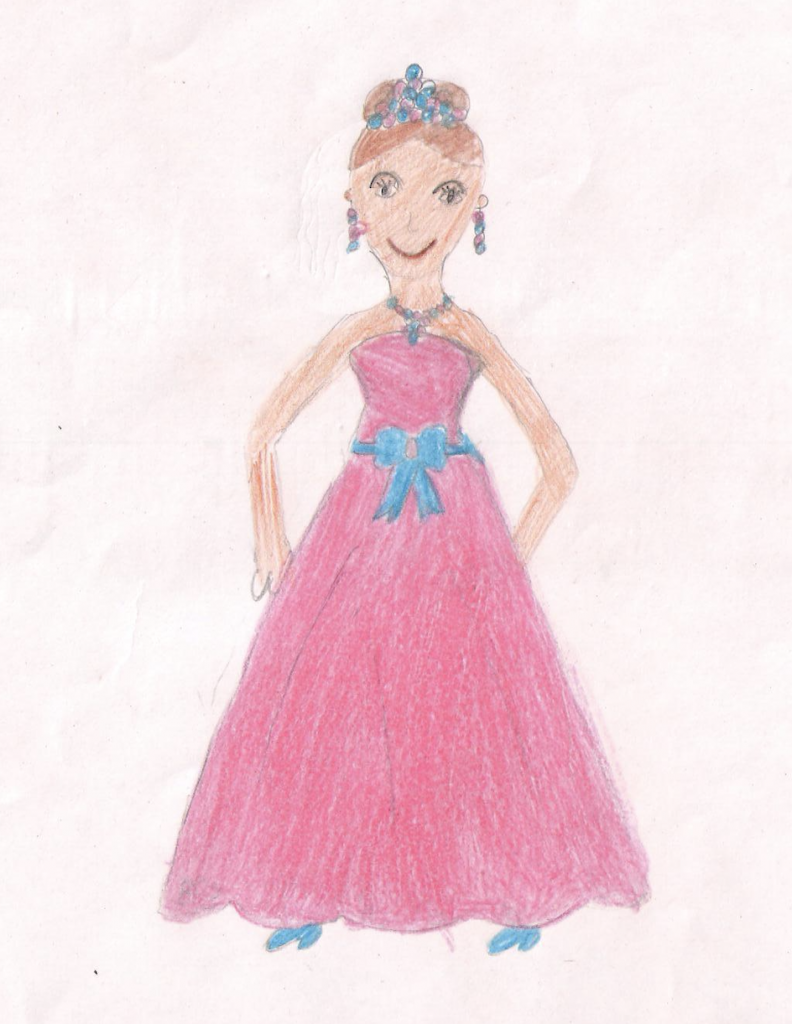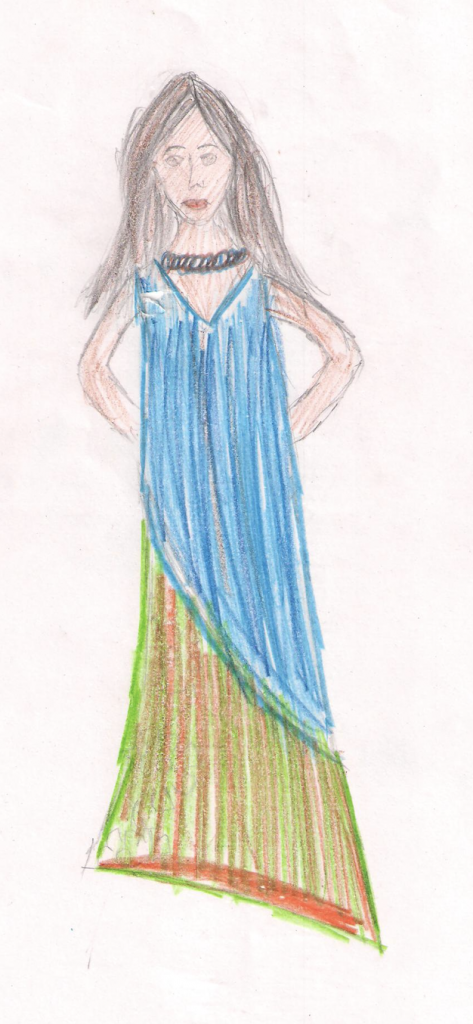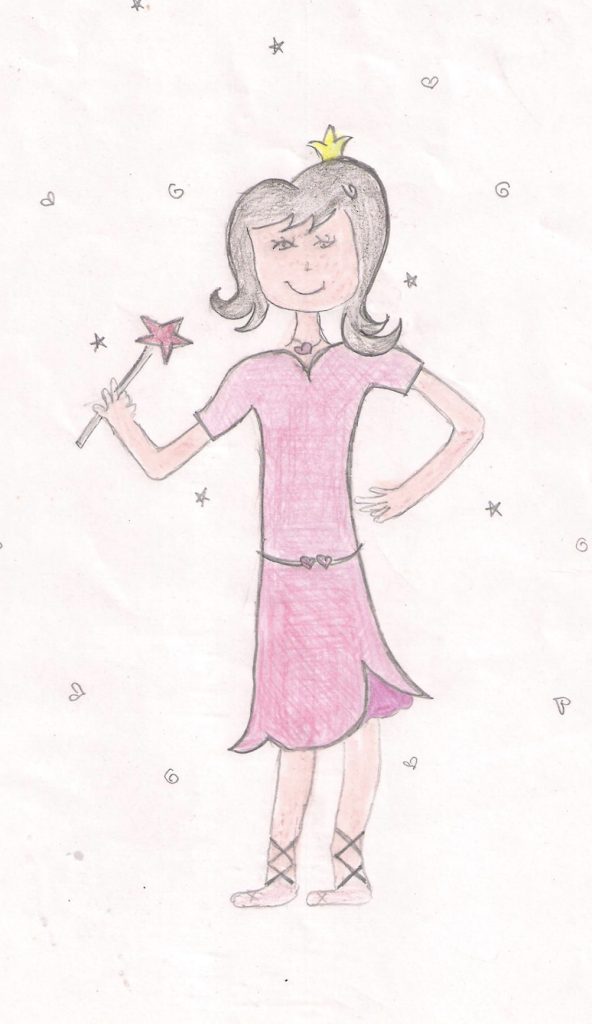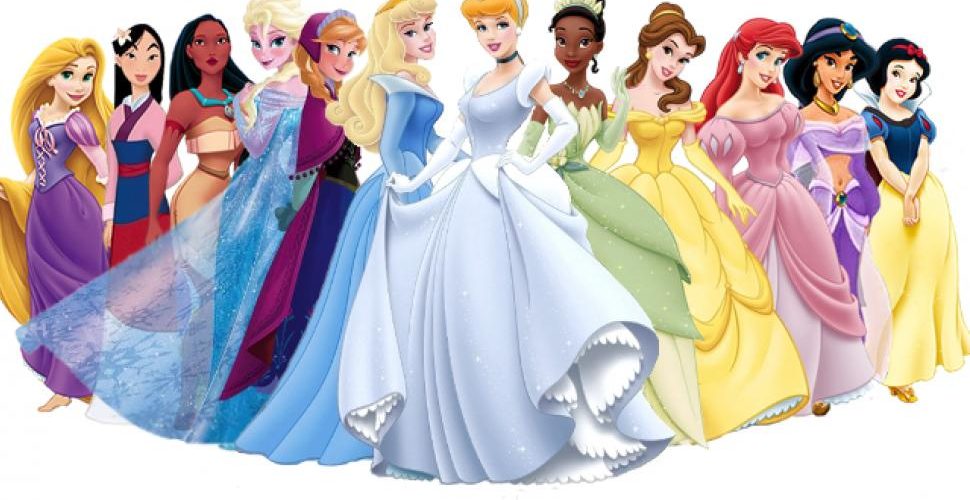Let’s play a little word-image association game.
What images come up when you hear the word ‘Princess’? A girl dressed in fine clothes? Expensive jewelry? Or is it a light-skinned girl, probably with long blonde hair, tiara or a crown, evening-gown, holding a wand?
What would your answer be if I asked you what’s a princess like?
Let me guess. She is rich, kind, friendly, pretty, dainty, fair-skinned, has long, preferably blonde hair, needs a prince to save her (sometimes), and always finds love?
In other words, a Disney princess?
Not that a princess cannot be/have all these things. In fact, a princess can be all these, but can also be much more. A princess can be dark skinned, have short curly hair, wear a saree and a big nose-ring, neither wear a crown nor hold a wand, but may have feathers in her hair and/or wield a sword.
But that is not what girls in India (8-15 years of age) answered when they were asked to draw a princess in a study conducted in 2009. A study that I conducted along with a colleague Diana Nastasia (2009), examined how girls (8-15 years) in India, China, US, and Fiji perceive the princess concept and what do they learn about being a girl from watching Disney movies. In 2018 the same study was replicated in Sweden for a more recent comparison. Here, I focus mostly on how girls perceived the princess concept in India, with some comments to compare the results with Sweden and Fiji.



Years between 8-15 are the most impressionable for developing a self-image and understanding one’s relationship to society. Often media images are central to developing a self-image. Scholars have established that children learn from modelling behavior they watch in their surroundings, including television (and other media). So, we wanted to study differences between girls growing up in countries that had a thriving domestic media industry capable of providing culturally relevant images (e.g. India), and those who watched mostly transnational media with actors/characters who did not look like them (e.g. Fiji). Sweden has a modest domestic media industry and a strong reliance on American products, although all non-Swedish media production is subtitled in English. All programming for children is dubbed in Swedish. India, has one of the most robust domestic media industry in the world that delivers products in several Indian languages including English. Until the 1990s, almost all of India’s media products were domestically produced. But by 2007, nearly 84% of children programming in India was imported (Lemish & Götz, 2012). Today, children in India are exposed to more non-Indian images, ideas and story lines than those from India. Although Disney released Jasmine (1992) and Mulan (1998) as a way of ‘diversifying’ the princess concept classic princesses have been around longer and have been incorporated in children’s culture around the world. Since literature and media products in post-colonial era have usually flowed from western to non-western countries, Indian children have read more about Cinderella and Snow White than western children have about Jasmine and Mulan. And Indian children are more familiar with western literature and movies than vice-versa. In this context, Disney products widen that gap between intercultural understanding because although some movies are based on non-western stories, their execution (treatment) is still very western. Some scholars argue that contrary to the belief that Disney’s princesses of color promote diversity, they actually endorse norms of western beauty (light skin, long-straight-blonde hair) and western values (independence and self-reliance at the expense of interconnected personal relationships that value community) (Limbach 2013; Stehn 2018). Often times Disney princesses assert their identity by breaking away from their families, norms and traditions and undermine the psychological role of community.
The study in India and Fiji (2009) began with screening of clips from movies featuring three non-western (Disney) princesses—Jasmine, Pocahontas, and Mulan. The girls were then asked to draw what they thought a princess looked like. Afterwards, each girl was first interviewed Individually and then in a group. Drawings were crucial to understanding how young girls visualize a princess.
In their response to who is a princess, all participants in India said, ‘A princess is pretty and rich, daughter of a King and a Queen, lives in a palace, wears expensive clothes, and has long hair.’ Some girls in India and all the girls in Fiji thought that they were too dark-skinned to be a princess. Girls in India and Fiji associated light skin with being beautiful, whereas girls in Sweden, a mostly Caucasian country never mentioned ‘light skin’ as a requirement for being a princess. Being light skinned in Sweden is the norm and therefore is not presented in the media as being beautiful or desirable. Girls in Sweden labelled princesses as dainty and blonde rather than pretty and light skinned. This difference shows the role that domestic media plays in developing a healthy self-image for the young. Despite viewing clips from movies featuring ‘princesses of color’ nearly all the girls in India & Fiji were more familiar with Cinderella and Snow White.
Also, Disney’s attempt at diversity seemed to have failed since both Jasmine and Mulan were considered ‘American’ by girls in India and Fiji’. Indian and Fijian participants who watched the movies in English did not consider Jasmine as middle eastern or Mulan as Chinese. Girls also pointed towards body language of these princesses and said ‘Jasmine talks and behaves like an American’.
Girls in Sweden, a country with modest media industry, and a real-life Royal family drew princesses close to reality—with a range in outfits—formal and non-formal, and mostly with a crown. Media images of Swedish princesses show them in ball gowns and business wear on the media, therefore drawings of Swedish participants are a reflection of their reality.
Interestingly none of the girls from India mentioned any princess from history or itihaas (Ramayana, Mahabharata etc.) nor did a single girl draw princess in saree, lehnga or salwar kameez. Indian outfits or Indian jewelry such as nose ring, bangles, anklets were not associated with the princess concept either. Instead, castles, long-evening gowns similar to those featured in Disney movies, along with wands and crowns were drawn (attached images). Although Fiji showed a similar trend (none of the girls drew a princess in Sulu-Chamba, a traditional Fijian outfit), its reliance on western media can be account for the disconnect. But for India this trend is alarming because India has always had a thriving media industry which, for a long time, gave a fierce competition to Hollywood. This also means that media images available to young girls in India have failed to connect the princesses-concept to being Indian. Instead, many of the classic Disney movies have been dubbed, and recreated for television and YouTube.
The results are disturbing for India and Fiji because despite a tradition of royalty in their respective countries they associate princess-concept with being western. Exposure to Disney princesses is not culturally antithetical for girls in Sweden, because many classic Disney movies are based on fairly-tales from Europe. Seeing Caucasian characters reflects a cultural reality for girls in Sweden. On the other hand being exposed to Caucasian princesses who dress western rather than Indian or Fijian instills a feeling of disconnect from their own culture. This disconnect is reflected in girls connecting beauty with lighter skin color than their own. Is it any surprise that fairness creams are so popular in these countries?
Culture, tradition and celebrations are also influenced by the rich and powerful in a country. While everyone will agree that Bollywood has pushed deracination and westernization under the garb of modernization for several decades, mediatization of the lives of the rich adds another level of confirmation. An example is the recent video wishes by the Ambani family for their daughter in law. The melody and imagery used is that from Snow White, not anything Indic. It is surprising coming from a family that is known for taking pride in its Indian and Hindu background. Surely, if they thought about it they could have paid someone to create a film featuring an Indian princess with appropriate imagery and music.
It is obvious that in contemporary media images in India, traditional wear, which is more suited to Indian climate–loose clothing that allow for air circulation,- is shown either on older generation or rural population, as if they are not a relevant attire today. Sarees which were considered professional for media anchors up until the late 1980s, have been replaced by business suits, which are unfit for Indian heat.
Although a trend towards westernization has been exhibited by Indian media since the 1980s, recent collaborations with western media houses has drastically altered media content. An example is Disney’s 2014 remake of the 1980 movie Khubsoorat. Under the aegis of Disney, Khoobsurat (2014) was turned into a ‘royalty’ vs. ‘commoner’ tale. Despite the fact that there was a young princess in the movie, the word Rajkumari was never used, nor was the princess ever shown dressed in an Indian outfit. Only the queen mother, ‘Rani-sa’ is shown in sarees, implying that Indian outfits are already obsolete.
A noticeable development from the original 1980 movie starring Rekha, is that the recent Sonal Kapoor starrer of the same name has several scenes involving alcohol. Alcohol is consumed on dinner table; alcohol consumption is used to begin songs and create misunderstandings in the movie. But most importantly despite differences in their values, ‘royalty and ‘commoner’ in the movie had alcohol-consumption in common. Makes one wonder if the movie was sponsored by a liquor company.
Produced by Disney, Khubsoorat (2014) also never connects the princess of the family to any responsibility towards her parents or her people. Her main goal in life is to be an actress. In essence, the movie honors professions that will support film industry as opposed to responsibility of the rich towards society.
What do girls learn about being a girl from such movies?
It is interesting how US, a country without any royalty has influenced girls around the world through Disney movies into believing what a princess is like and defined the terms of ‘beauty’. The new trend of turning Disney movies into live action movies not only shows the financial strength of the company but also a way of cashing on its previous successes. Adults who grew up watching earlier animated versions are pulled by nostalgia to invest in the new movies and expose their own daughters to the same content, as the associated figurines are sold with happy meals at fast food joints. The trend continues. One marketing machine feeds the other.
And let’s not forget Disney creates princesses in many forms. Shows like Hannah Montanna and That’s So Raven, cover the market for all skin colors while using the shows as a platform for consumption and generating fashion trends. The cycle continues as more and more girls around the world the dress and behave alike. Girls interviewed for my study in Sweden shared that they follow many YouTubers, who are, ‘kind, care for animals, and have long blonde hair.’ In India, a combination of imported children programming and westernization pushed by Bollywood has created a consumption oriented youth culture that was absent two decades ago. Today, young girls grow up associating being western in looks, behavior and mannerisms with being pretty and desirable, and consumption with progressiveness.
While beti padao and beti bachao plans are commendable, if media content does not teach young girls to take pride in their own, skin color, language and traditions, they may gain economically but will lose culturally. Young girls in India need to have access to programming that evokes a sense of pride at being dark skinned, honoring their civilization, its traditions and wearing Indian outfits.
Change in media content may take a long time or may never happen. In the meantime parents’ and communities must take it upon themselves to expose their daughters to princesses from India, hopefully through reading and discussion. Parents must share stories from itihaas both contemporary (Rani Jhansi, Jijabai etc.) and ancient (Sita, Draupadi etc.) of Indian princesses whose skin was the color of dusk, or roasted wheat, who wore sarees, braided their dark hair, and ran kingdoms and wielded swords with equal proficiency. Only when young girls are exposed to princesses who look like them, who speak their language and are addressed by Indian names and titles will they learn to see themselves as capable of being a princess!!
Bibliography
Götz, Maya, and Dafna Lemish, eds. 2012. Sexy Girls, Heroes and Funny Losers: Gender Representations in Children’s TV around the World. Frankfurt am Main. New York: Peter Lang.
Limbach, Gwendolyn. 2013. You the Man, Well, Sorta: Gender Binaries and Liminality in Mulan. In Diversity in Disney Films: Critical Essays on Race, Ethnicity, Gender, Sexuality and Disability. Edited by Johnson Cheu. Jefferson: McFarland & Company, pp. 115–28.
Stehn, Molly. 2018. A Brilliant but Frosty Solution: Frozen® as an Allegory for the Central Relational Paradox. Journal of Creativity in Mental Health 13: 254–61.
Featured Image: ET Online

